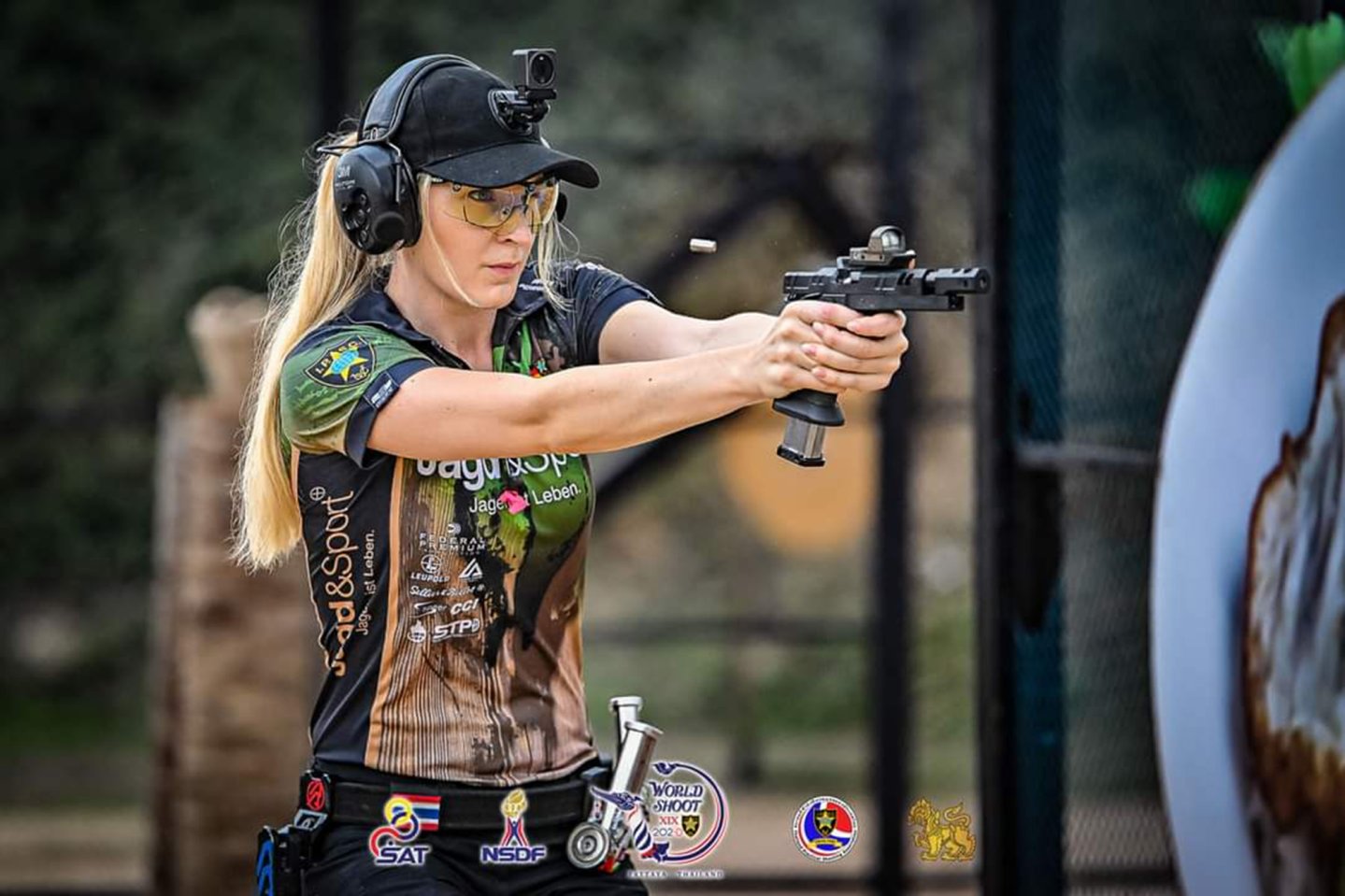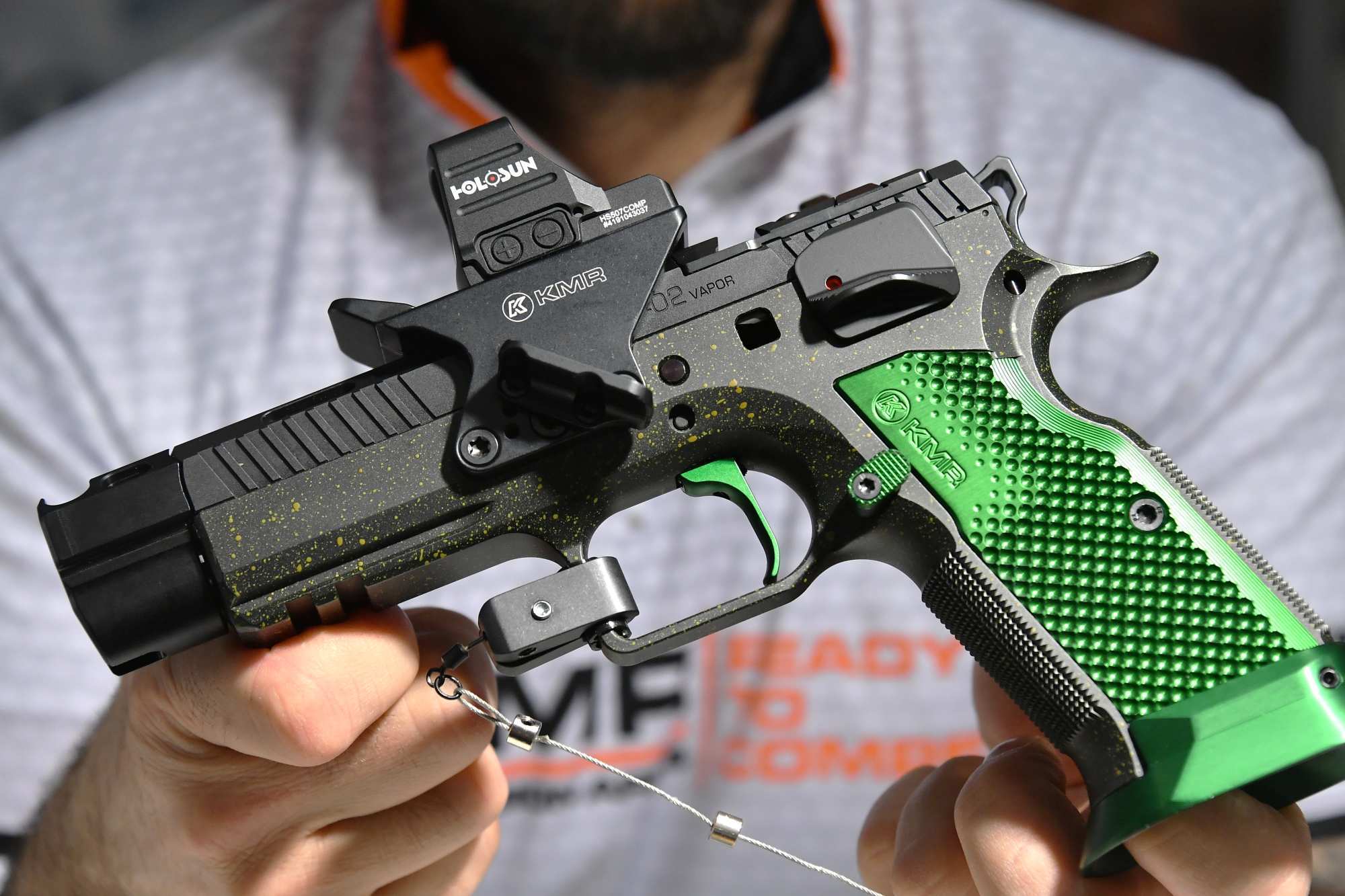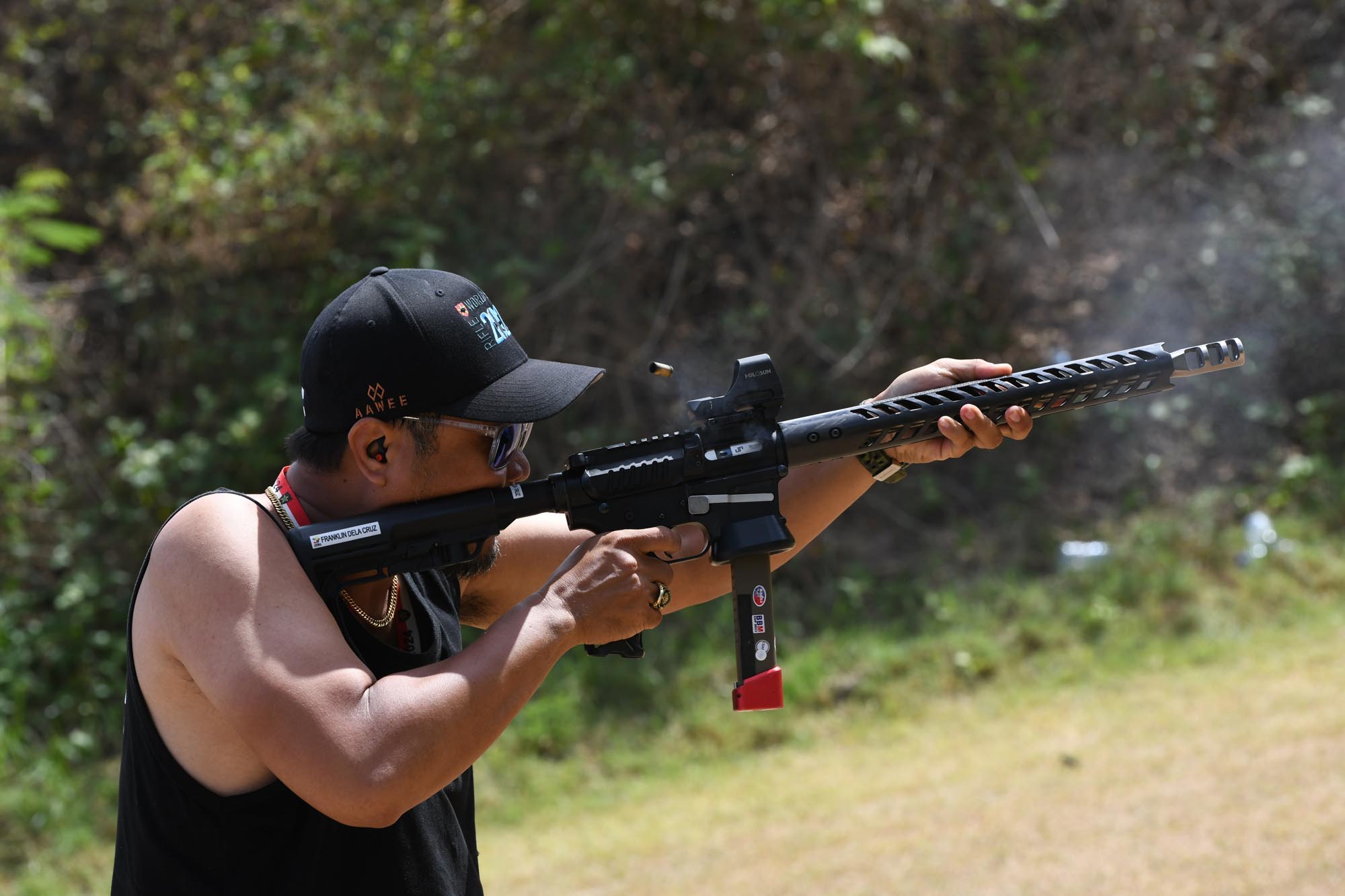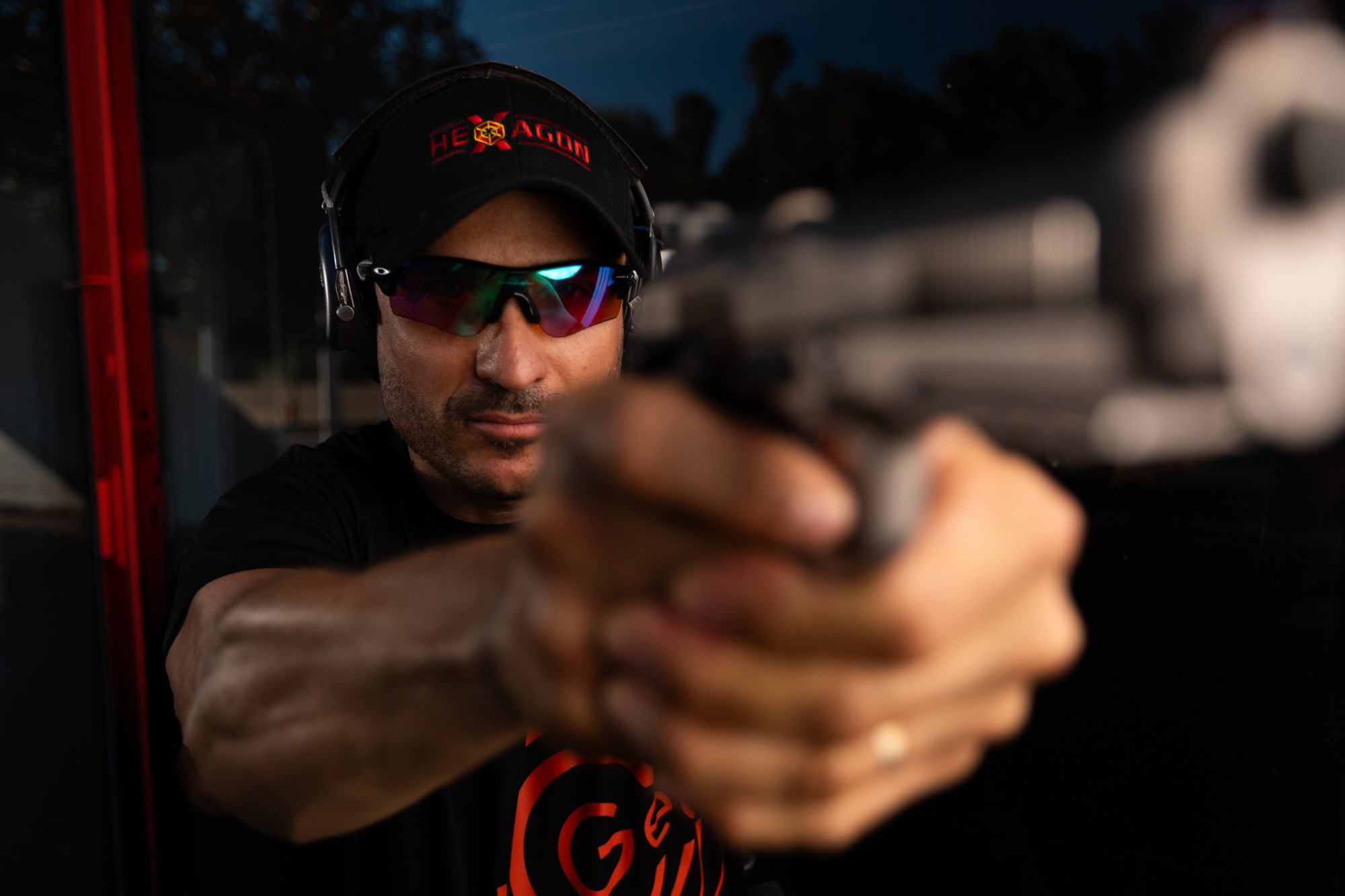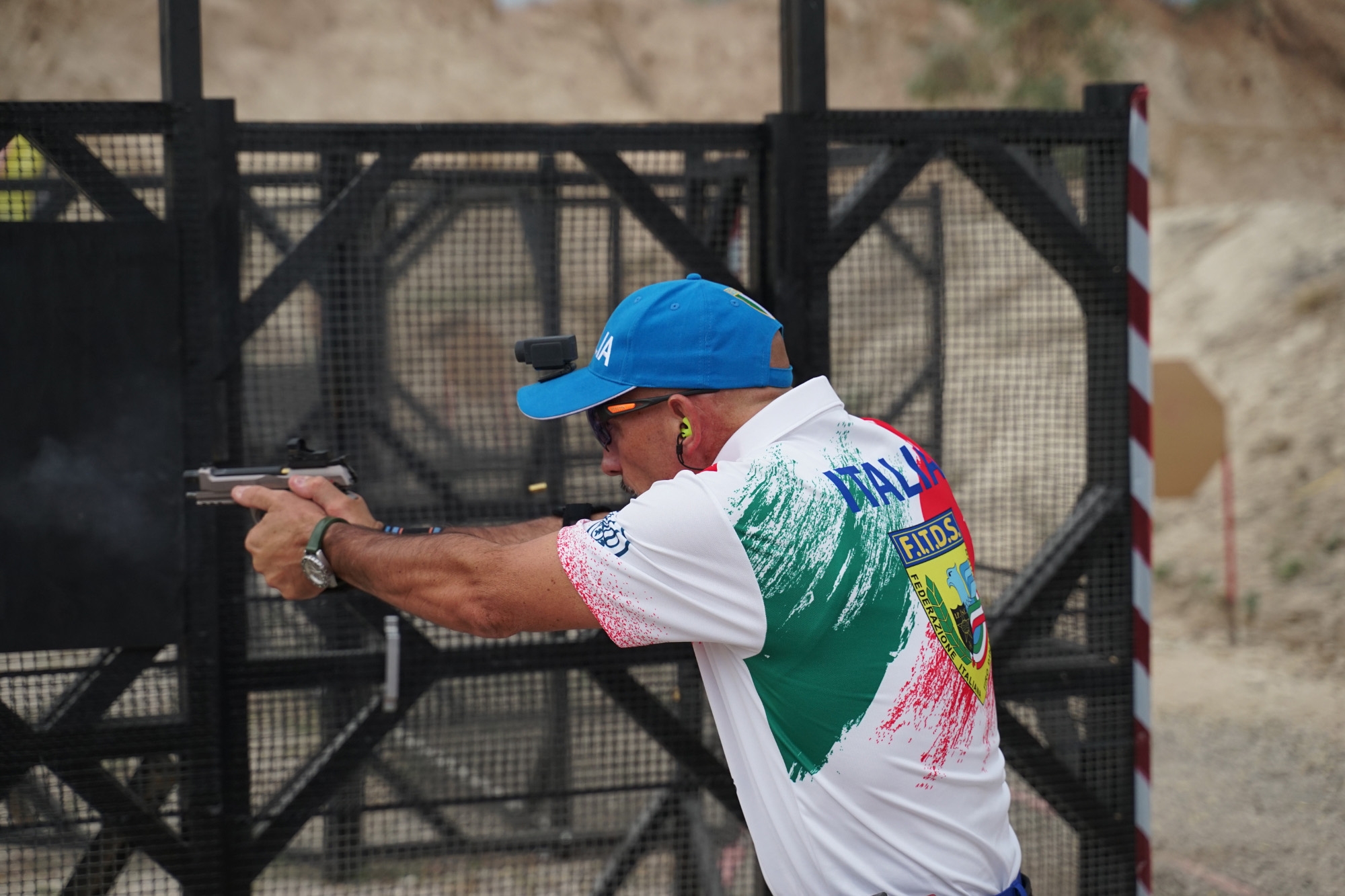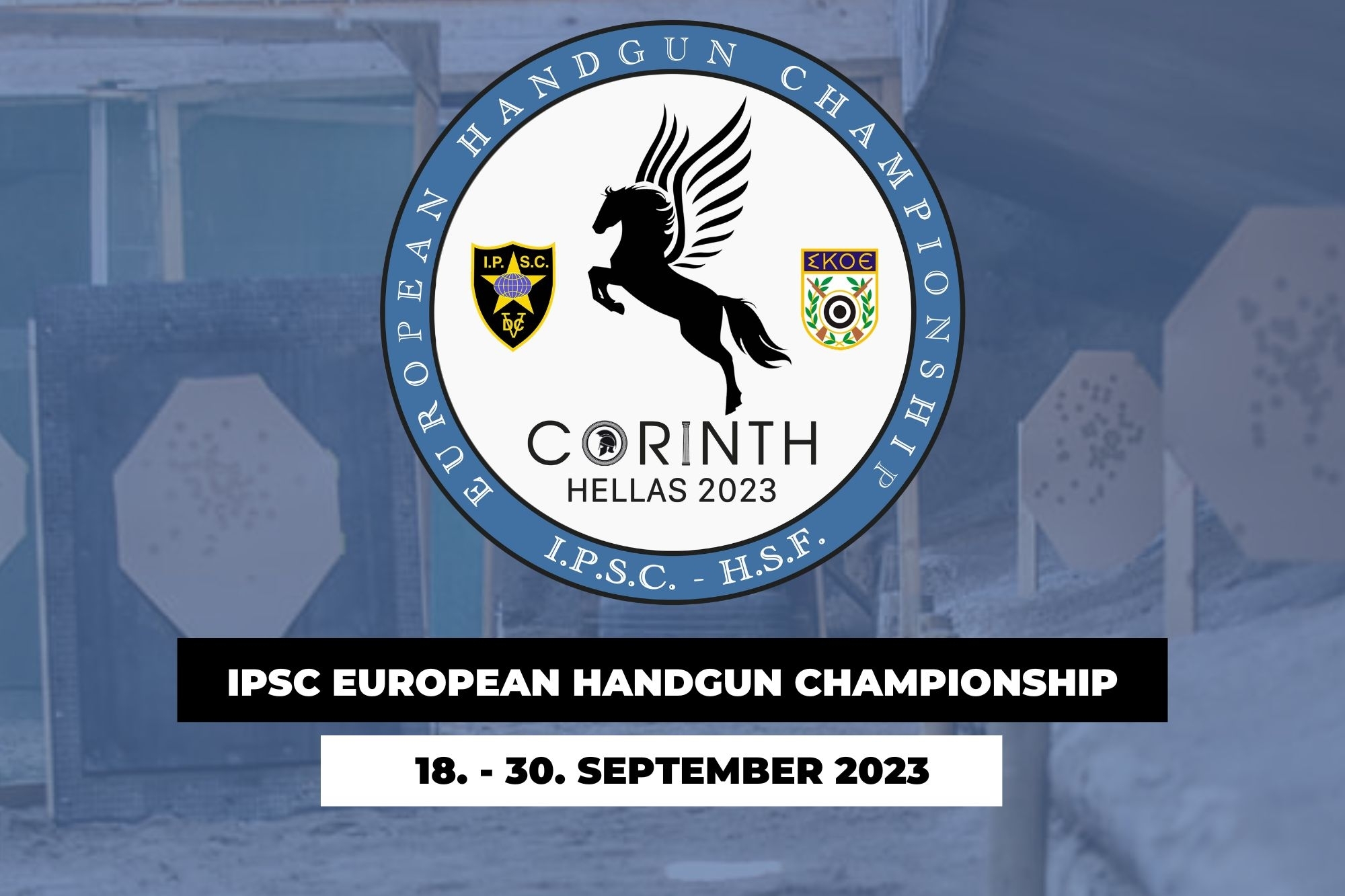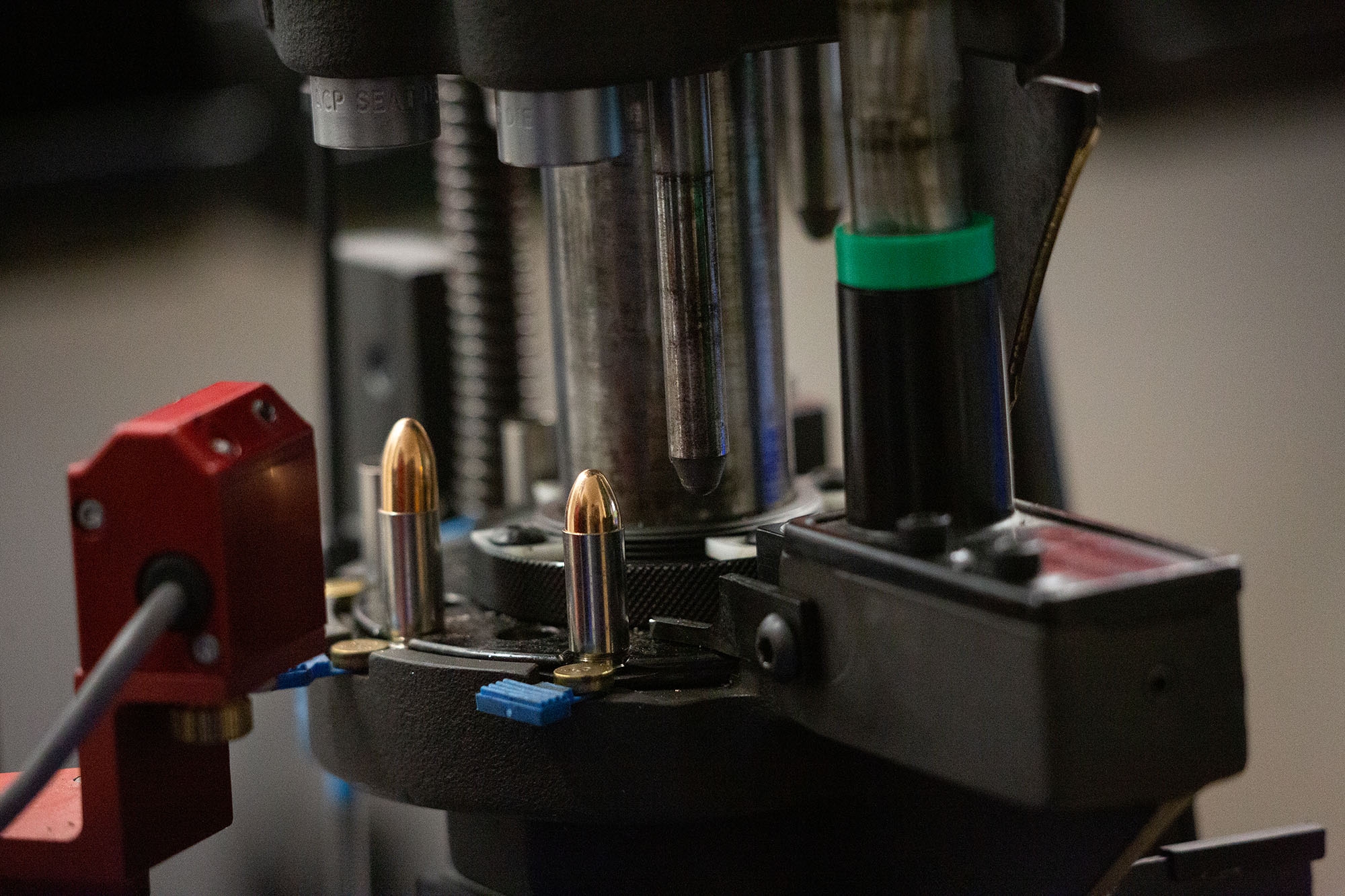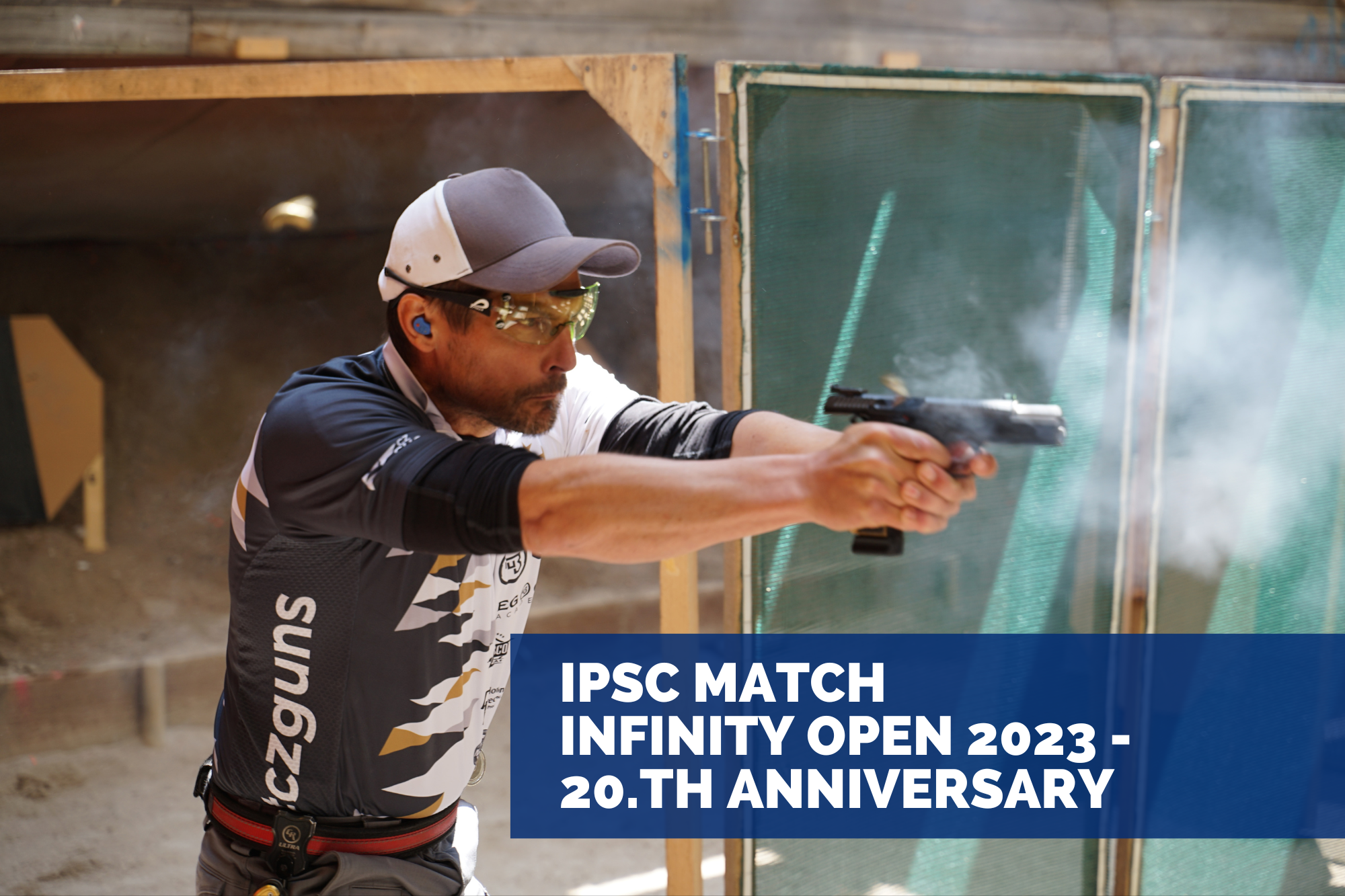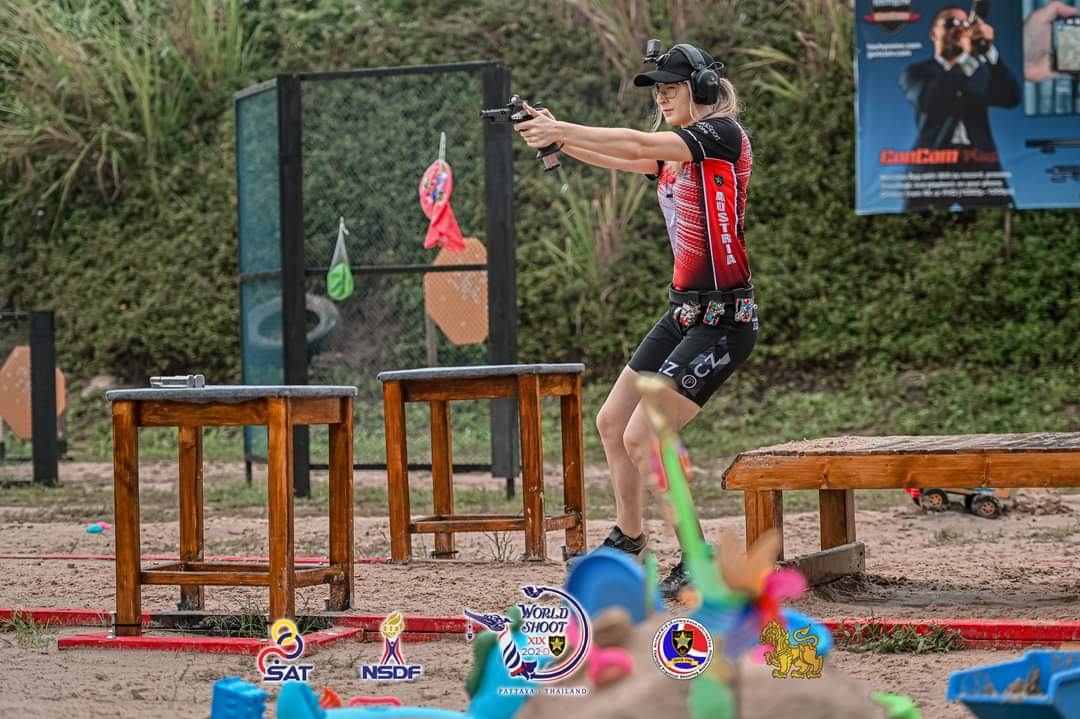What am I training today? What will get me further? The same again? At the last competition I had so many mikes (missed shots), what do I have to train so that this doesn't happen again?
If these or similar questions are running through your mind, I may have a few tips and inspirations that will make your shooting training even more effective. These are not just for IPSC shooters, of course, but can be adapted to help any dynamic shooter. But first about me: I am Samantha Wendel and IPSC team shooter in the Austrian national team. Last year I competed at the World Shoot in Thailand (I made a World Shoot Vlog about it on YouTube and also wrote some articles here at all4shooters.com, most recently one with reloading tips for IPSC shooters). I've been shooting IPSC for 10 years now, but it wasn't until I moved to Austria and started training with my now fiancé, Horst Holzinger, that I made a huge leap in performance.
Where does that come from? That brings us to the point: size and composition of the training group
In my early days in Germany, I was able to train with my parents once a week in a training group consisting of 10-15 people for about 1.5 hours. With the construction and dismantling of a course, I was happy at every training session when I could shoot all my magazines empty once. Shooting more than 100 rounds or more than four times through the course was simply not possible at that time. In Austria, Horst and I went training three or four times a week, just the two of us, and we shot around 500 rounds in each training session. This increase in quantity alone makes a big difference, of course.
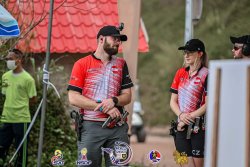
An optimal training group consists of 2 to 4, but no more than 5 people. AND: training is always calibrated to the weakest shooter. So if there is a complete beginner who can just "run straight" without shooting himself/herself in the foot, you can't build a highly complex course. Preferably, all members of the training group are on the same level and push each other to shoot even better, faster or more accurately. If there is a better shooter who is doing the training and acting as a role model, that is tremendously helpful to everyone else, but you also have to realize that the better shooter will only get better if he trains with someone who is in turn better than he/she is. Now some of you will say, "That's all well and good, but I don't have the opportunity to choose who I train with, my club only offers training once a week, and that's when everyone comes."
Therefore, we now come to the next point. Samantha recommends: train basics first – DO NOT shoot stages!
What?! I train for competitions on stages and now I'm supposed to not shoot stages?! But let's break down each stage into its individual parts. As a rule, such a stage consists of a start, where you either shoot first and then move on, or the other way around. In every stage there are positions where I enter from the front, back, left or right, shoot, and then run away again to the front, back, left or right. Targets I can shoot at on the move or statically, targets I have to shoot at very precisely or simply hit, moving targets or steel targets, and different shooting positions, and all this with both hands, with and without magazine changes, stronghand or weakhand, and so on. It is difficult to train certain tactics, how to best break up a stage, how to find the best path, if you set up the stage yourself and already have a specific path in mind while setting it up. In addition, setting up and dismantling costs valuable training time, which hardly any of us have. So the magic formula is: train the basics.
IPSC Training Exercise No. 1: the numbers game in motion
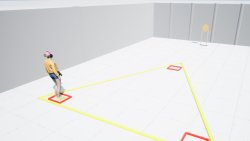
Let's start with movements. One of my favorite exercises is to train movements in isolation, because that allows me to focus maximally on how to get into a position so that I'm ready to shoot as quickly as possible when slowing down and aligning, and from which I can move away again immediately after the last shot. To do this, I mark three positions in a triangle on the ground. This can be done very easily with the help of cones, marks on the ground, target stands or the like. It's just meant to give you a clue. Then you hang one or three targets. You can shoot at one target at a time from the three positions, or use a separate target for each position. At the beginning, the target should be quite simple, a solid target at a distance of 10 to 15 meters. If the movements are correct, the targets can become more difficult. Then, together with your training partner, mentally number the positions. Mentally! Don't make it too easy for yourself and mark the positions – you have to remember them. Now you shoot positions 1, 2, 3 and 1. Two rounds are shot from each position. You start at 1, fire two shots, run to 2 (forward movement), fire two shots, run to 3 (backward movement), fire two shots and now run back to 1 (sideways movement) where you fire two shots again.
And now it gets funny:
After the "Load And make Ready" your training partner tells you a random combination of numbers. For example, 1, 3, 2, 3. You memorize this briefly, "Standby", and off you go. At 1, shoot twice, to 3, shoot twice there, to 2, shoot twice and again to 3, shoot twice. That's it. This way you'll train all variations of movements and your short-term memory. And don't forget: push each other. Horst and I jokingly scold each other when the position sequence is not followed correctly, and for each delta we have to do 5 push-ups. Just do something that gets your heart pumping and keeps the stress level high. There's no limit to your imagination. "Start on the 1, run to the 2, shoot two rounds, run to the 3, changing magazine as you go, shoot two rounds, run to the 1 and shoot two rounds again at the 2..."
IPSC Training Exercise No. 2 : the static numbers game
Had enough physical exercise? Then we'll get your head going with the next exercise. For the next exercise, we'll hang up targets of different sizes and distances. 5 to 6 targets, but that's also up to you. Try to hang them as far apart as possible. If you have mobile bullet traps set them up at almost 90 degrees to the left and right of your starting position. If that doesn't work, get within about 10 meters of the bullet trap and use the full width of the bullet trap. Ideally, you will have as large a transition as possible: one or two very close and easy targets, and one or two very far away, small, difficult targets. You must number these again together mentally. Mentally! Don't make it too easy for yourselves! To warm up, we shoot through targets 1 to 6 again. And then your training partner may torture you again with number combinations.
What do we train through this?
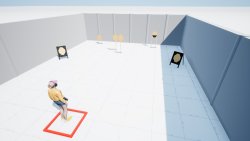
- Remember an order and don't always shoot the first target you see. In competition, it is often useful to skip an alternate target, shoot the steel activator target first, then the alternate target, and then the swinger.
- Transition: If two targets are far apart, but I have to stay in the same position, I have to make a very large swing from one to the other. This often involves the risk of overrunning the second target, pulling the trigger when you're not really on the target yet, and thus missing the first shot on the second target.
- How fast can I shoot which target? Actually logical, close targets can be shot fast, distant targets require more accuracy and therefore more time. But if, for example, you shoot two fast targets, then have a far away, difficult one in between, and then another fast one, it suddenly becomes damn hard to slow down enough to hit the difficult target cleanly, only to accelerate enough again and shoot the easy targets at maximum speed. Since this can be so difficult, yet so incredibly important, there is a separate exercise for this.
Let your head spin. Shooting is a matter of head. If your mind is elsewhere, or still thinking about the mikes on the previous stage, you will make mistakes again. If your head is already so overwhelmed with shooting, you have no brain capacity left to react to the unexpected, such as gun malfunctions or necessary reshoots.
IPSC Training Exercise No. 3: decelerate & accelerate
Accelerate & decelerate. As mentioned earlier, changes of pace are incredibly important, but also very difficult. Often enough, you hear that shooters have "burned" themselves while shooting. In other words, they shot a target significantly faster than they could have, and as a result they didn't hit the target well or at all. This often happens, for example, when you were able to sprint your distance very fast beforehand and now you have to shoot a far away target with a racing heart and full of adrenaline. Or, if you have shot very easy close targets very fast and now have to change to a distant or more difficult target. However, this can happen the other way around as well. After having to shoot very distant targets, you often see shooters shooting close targets still hesitantly and cautiously afterwards. Yes, the hits on these close targets will be perfect. But you could have shot them much faster, and lost time by hesitating. Therefore, in the next exercise, we place several targets from easy to hard. From close to far and from large to small. And now we shoot them through from easy to hard and back again. Sounds trivial and simple at first, but with constant repetition you will learn how fast you can shoot each target, where your limits are, and if you can't perhaps go a bit beyond your imagined limits. But ATTENTION: you want to shoot alphas. MAJOR shooters are also allowed to have a few Charlies with them, but especially if you are shooting 9mm MINOR, you are not allowed to shoot Charlies in training. Why? Because from experience, Charlies in training become Deltas in competition. And Deltas in training become Mikes in competition. If you can do this exercise statically at a good pace and with good hits, run into the position from which you are shooting the targets. Do exactly what so often causes problems in competition. Sprint into position, stop and shoot the distant target, then accelerate back to close. And the other way around.
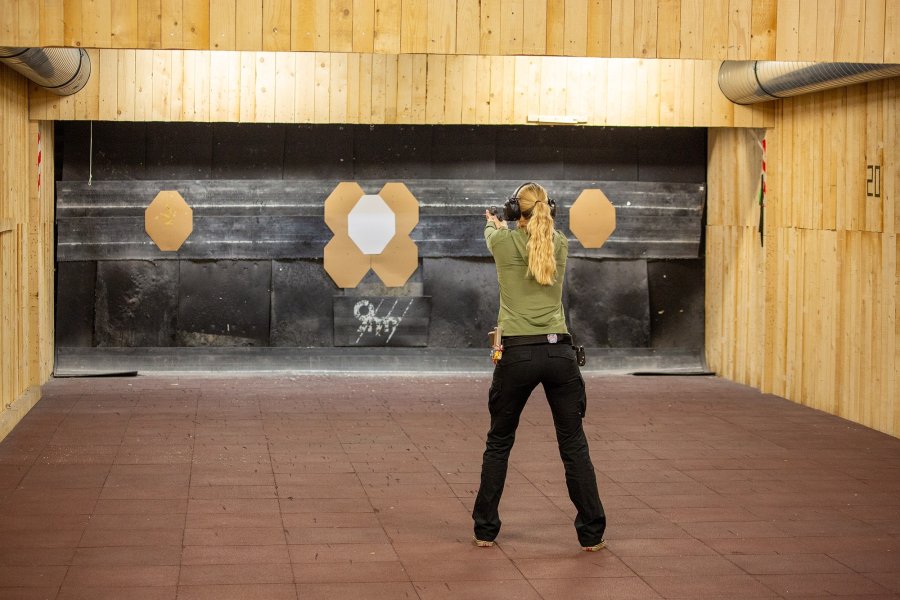
IPSC Training Exercise No. 4: rhythm shooting on the target array
Now it becomes musical. Shoot follow-up shots, but with rhythm! This exercise is a real ammunition eater (my fiancé doesn't call me an "ammo eating monster" for nothing), but it's incredibly useful when it comes to shooting targets that are close together at an insane speed. For this we arrange a target array of four targets, with a no shoot target in the middle and another target to the left and right of it. Now we shoot one of the two outer targets first, then the target array, and then the other outer target. The rule of thumb is to always shoot the bottom target first and then the target above it, because that way you don't have to work against the recoil. When I shoot this exercise and start on the left outer target, for example, I shoot the left lower target first, then the right lower, then the right upper, and then the left upper. So I stay in a fluid circle. Of course, this is not the only true way. The important thing is to shoot two clean ALPHAS on each target, and not just sprinkle them over in a circle. And now comes the exciting part: When shooting the four targets, you are NOT supposed to hear follow-up shots. It's supposed to be an evenly timed bang, with no interruptions. So: Bam Bam Bam and not BamBam, pause, BamBam pause...
At first you think to yourself, “OK, then I'll just shoot more slowly, then I'll have more time to switch targets and it sounds like a steady rhythm”. But now we're picking up the pace a little bit, and very quickly you'll be shooting at maximum speed again, and switching between targets will happen faster and faster. And so you train to shoot such target arrays incredibly fast, not wasting any time and still shooting cleanly. Finally, I can only urge everyone to analyze their last competition carefully and isolate the mistakes they made as much as possible. Only if you consciously make these small movements, target changes, shots on hard or easy targets correctly over and over again, will you be able to put the big puzzle together in the next competition and do everything right without thinking about it.
Samantha will soon tell you how best to approach a course in competition and what the right tactics are here on all4shooters.com.
From September 24 to 30, the European IPSC Handgun Championship 2023 will take place in Corinth, Greece. Of course we will keep you updated here on all4shooters.com about this European Championship.


